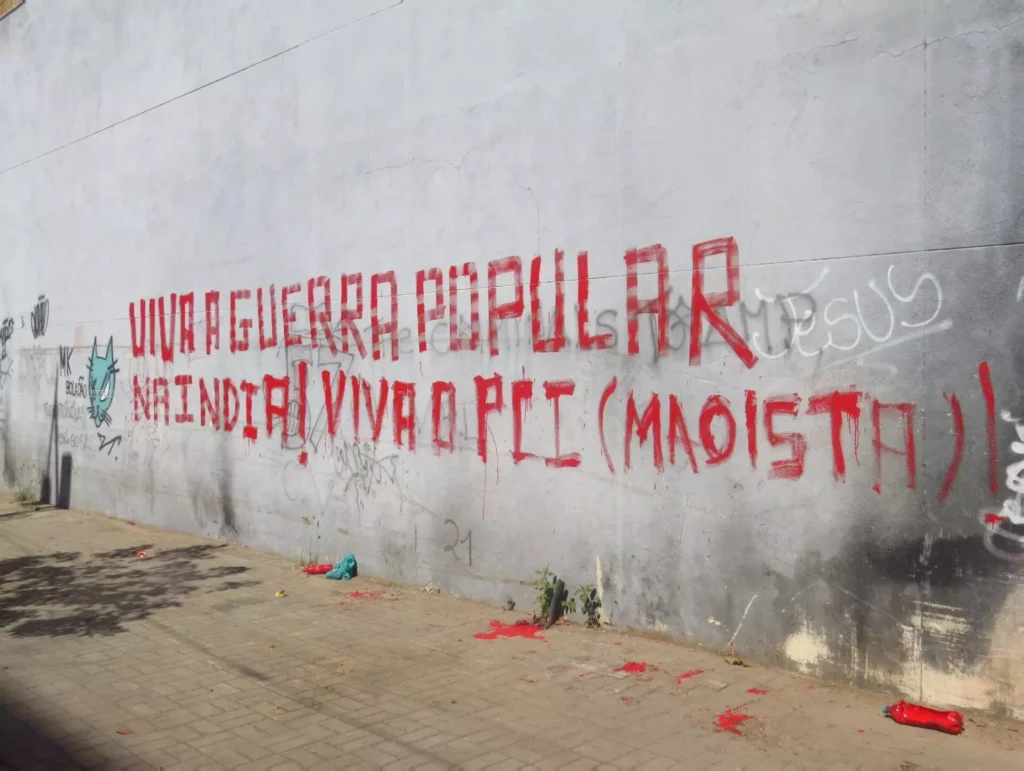
India: on the 57th anniversary of the Naxalbari uprising
On Friday May 24 was the 57th anniversary of the Naxalbari uprising in which the Indian people rebelled against the imperialist oppressors and its lackey bureaucratic-big landlord government of India, and against the revisionist and opportunists class collaborators. We already reported on actions carried out for this anniversary along with actions for the elections boycott campaign.
These actions done at the Delhi University have had a wide echo among the Indian media. Before that, the Indian police has opened two separated investigations on these actions, showing how today, after almost 60 years of the Naxalbari uprising, the old Indian State still fears the wrath of the people.
Hereby we publish the unofficial translation of a post published by Revolutionary Students’ Front on the history of relevance of Naxalbari.
The long history of communist movement in India is the history of sacrifice and struggle of workers and peasants. Unfortunately, this history also includes a history of compromise by a class of revisionist leadership that is stigmatized. Again, the history of uncompromising struggle of agrarian revolutionary politics against that wrong trend is also shining, that history is the history of Naxalbari.
After the transference of power, the foreign imperialists and bureaucratic capitalists tied up with an existing feudal system to maintain the loot business. Various repressive laws of the British appeared in Navakalebar as the Indian Penal Code. The revisionist communist leadership put forth a strange theory of bringing socialism through a peaceful path away from the path of revolution and the dictatorship of the working class. In the name of land distribution only the interests of a class of rich peasants were protected. Land changed hands and fell into the hands of new big landlords. But those who harvest the land throughout the year and bring crops to the land, they are the real owners. Against all this the Naxalbari movement emerged with the destructive force of a whale.
On May 24, 1967, in Naxalbari, police chief Sonam Wangdi was killed, and the wrath that was created spread like wildfire in the heart of Bengal and India. On the one hand, the revolutionary people got the idea of liberation, on the other hand, the counter-revolutionary parliamentary and right-wing authoritarian governments were simultaneously afraid as they are today. But after 50 years, why should we know the history of the Naxalbari movement today?
Chairman Mao spoke of the three magic weapons of revolution — the Communist Party, the People’s Army and the United Front. A new democratic India can be established by defeating all the enemies of the people only by the well-planned application of these weapons. Especially today when imperialism is counting the days of its extreme crisis and is desperately shaking the hammer to find new ways of exploitation like agriculture bil or thelabor code in countries like India. They are planning to loot people by putting fascist forces like BJP-RSS in power. Attempts are being made to root out protesting voices by implementing black laws like UAPA, AFSPA or through the action of NIA. Be it the Kashmir border or the jungles of Bastar, the Hindutva State is using all its forces to destroy the revolutionary movement by launching aerial drone attacks on people which is against the looting. The cheeky name of this war against the masses is Operation Kagaar. The Indian State is sacrificing its own people for the sake of capital. In this situation, it is possible to build a new democratic India by struggling against the enemies from home and outside, using the teachings of Naxalbari. Not parliamentary hypocrisy but revolutionary communist politics can establish the peasant-workers’ rule in this country.
We received an image of a graffito from Colombia:

We also publish an update of the photos on the campaign “29 murdered in fake encounters in India! The combatants of the PLGA are immortal!” from Brazil.





You can see the rest of the photos here:

